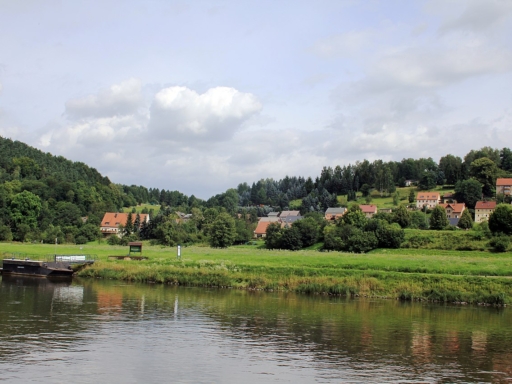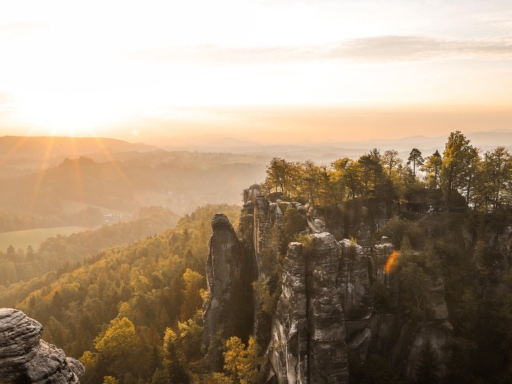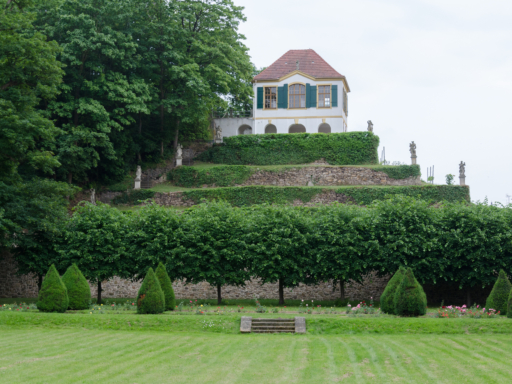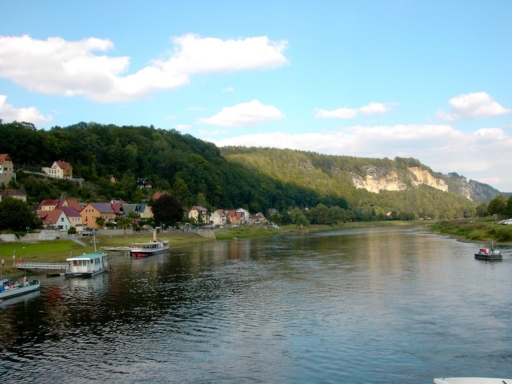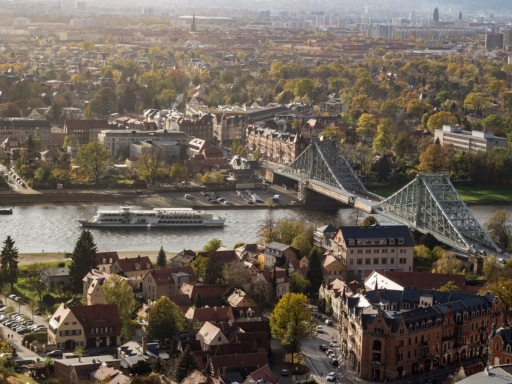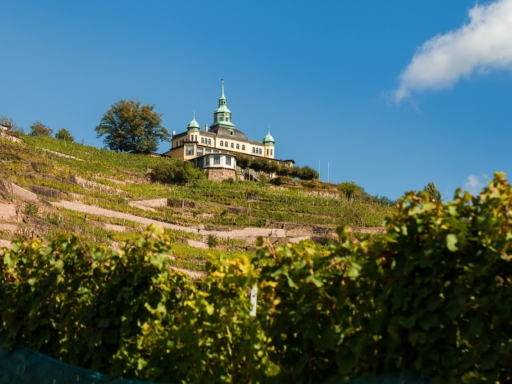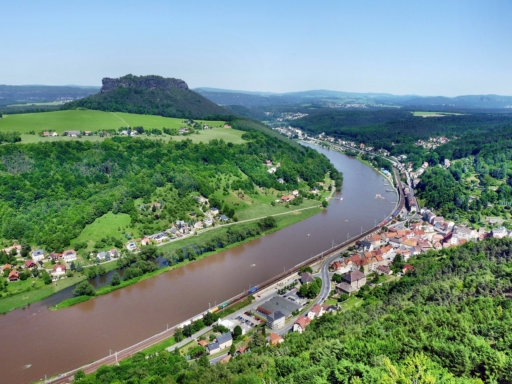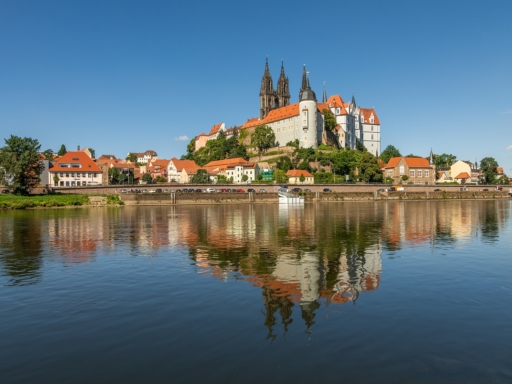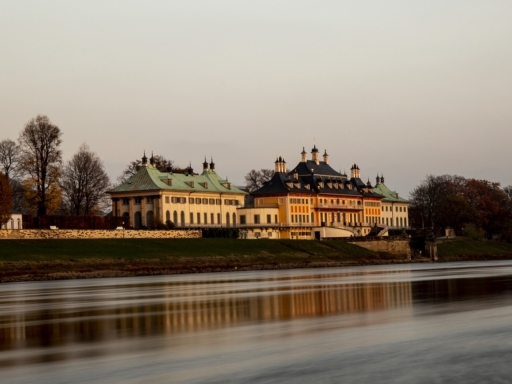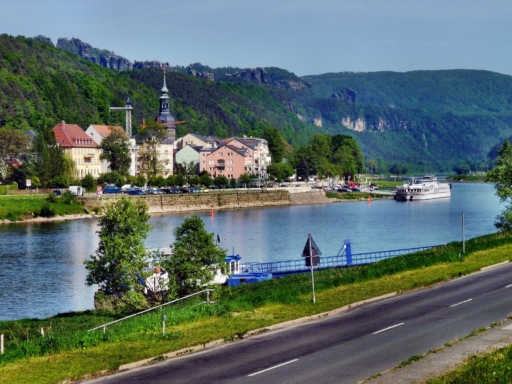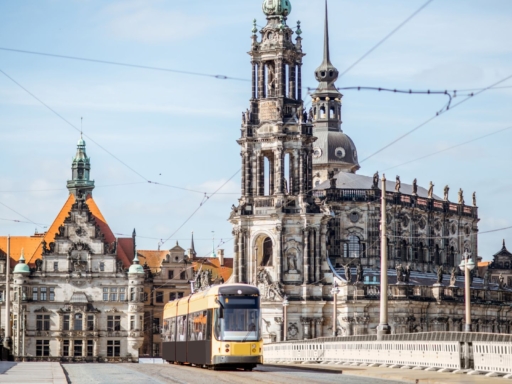Prossen was first mentioned in a document on May 15, 1412 as “Prossentin” and was once a knight’s seat. It had a favorable location, because here the “Alte Steig” (old path) led across the Elbe – the most important trade route, which connected Bautzen and Königswald through the area of Saxon Switzerland. Holidaymakers appreciate the quiet south-facing location of the village between Bad Schandau and Königstein. From the pier in Prossen you can get to the Lilienstein in about 1.25h. From there you can descend in the direction of Königstein and reach another pier of ours. The town of Prossen also holds worthwhile destinations, including the former manor house or castle Prossen.

SAXON WINE ROUTE TO SAXON SWITZERLAND
Cruising Area & Stations
Experience the fascination of over 185 years of shipping history on the Saxon Elbe! Our fleet of 9 historic paddle steamers and 2 motor ships will take you along the beautiful river landscape to a total of 13 mooring stations between Seußlitz and Bad Schandau. Enjoy the unique combination of technology and nature and let yourself be enchanted by the charm of the ships.
Kurort Rathen
The spa town of Rathen, surrounded by rocks and gorges, has always been one of the classic hiking and climbing areas. The Bastei, the Mönchsfelsen and the castle Altrathen are located high above the city. Also famous is the Felsenbühne, one of the most beautiful natural stages in Europe. The open-air theater with over 2,000 seats is located in a magnificent rocky setting in the Wehlgrund.
Diesbar
The area around Diesbar is an insider tip for excursionists who like peace and tranquility during their excursions. Wine hills are harmoniously blended with forests and meadows, and the Elbe flows here in a large arc through the middle of the landscape. They say that spring comes a little earlier, autumn stays longer.
Pirna
Pirna, 20 kilometers from Dresden, is the gateway to Saxon Switzerland. In the center of Pirna, a tour of the time-honored town is worthwhile. You will reach the town hall. It is located in the middle of the market square and combines stylistic elements from five centuries. Behind the houses on the east side of the market you will find the massive town church of St. Mary, built in the first half of the 16th century in place of an older church. You can still see the steep roof from far away during the navigation on the Elbe. Today, the Dominican monastery houses the town museum.
Stadt Wehlen
Hikers who are drawn here again and again affectionately call the place “Wehlstädtl”. The town and village of Wehlen are connected by over 700 years of common history. The small market square with the town hall and church forms the center. Formally above it rises the castle hill with remains of walls from the 13th century. Recommended: a visit to the adventure pool or the horse farm (with horseback riding). Attractions are also the local museum and the plant garden.
Blasewitz
Harmoniously integrated into the landscape, three Elbe castles perch on the former vineyards on the slopes of the Elbe: Albrechtsberg Castle, built for Prince Albrecht, Lingnerschloss Castle, built for his chamberlain, and the picturesque Eckberg Castle. The “Blue Wonder”, the suspension bridge connecting Blasewitz with Loschwitz, spans the Elbe at a height of 15 meters over a length of 142 meters, without any piers.
Radebeul
Radebeul is located on the Saxon Wine Route between vineyards just outside Dresden. Here it is worth visiting the Karl May Museum (Karl May Street 5), the last home of the writer. Villa “Shatterhand” and “Villa Bärenfett” offer about 850 exhibits in addition to the legendary silver rifle, bear slayer and Henrystutzen. The Dresden Elbe Valley begins with Übigau Castle – located between Radebeul and Dresden.
Königstein
From the Elbe River, Königstein presents an imposing picture: the town stretches up the valley of the Biela River for several kilometers. High above towers the landmark – the Königstein Fortress. Due to the military impregnability of the Königstein, Saxon electors and kings sought refuge behind the thick walls in troubled times and stored art treasures and the state treasure here. In addition, because of its scenic location, the Königstein was a popular place for sumptuous festivities of the court. Later it served as a feared state prison of Saxony.
Meißen
Even from a distance you will discover the silhouette of the city – it is picturesquely surrounded by hills in the Elbe valley and is dominated by the castle hill. Stroll through the 1000-year-old old town with its town houses, its staircases, portals, narrow streets and historic wine taverns. Among the famous Meissen sights are the Franciscan Church (now the City Museum), the Church of Our Lady with the world’s first built-in carillon made of Meissen porcelain (1929), the castle hill with Albrechtsburg Castle and the cathedral.
Pillnitz
The castle and the park in Pillnitz invite you to stroll. Water and mountain palaces were created by order of August the Strong. Buildings and parks were the summer residence of the Saxon court until 1918. The gondola in which members of the court traveled on the Elbe to festivities, as well as the oldest camellia tree in Europe, at around 245 years old, can still be discovered in the park today. Shortly after Pillnitz – in Söbrigen – the Dresden Elbe Valley ends and the waterway takes you in the direction of Saxon Switzerland.
Bad Schandau
The town of Bad Schandau is known for its idyllic location on the Elbe River and its natural thermal springs, which have been used for therapeutic purposes for centuries. Bad Schandau is a popular destination for hikers, cyclists and climbers who want to enjoy the spectacular scenery of the National Park. The city also offers a variety of spa and wellness services, as well as cultural events and festivals.
Dresden
Dresden offers a variety of sights. The Brühl Terrace, a 930-meter-long promenade above the banks of the Elbe, is just one example. The Theaterplatz, surrounded by Dresden’s most famous buildings: the Catholic Court Church, the Palace, the Semper Opera House and the Zwinger with the Crown Gate. The Zwinger houses, among other things, the Old Masters Picture Gallery with 650 paintings, including Raphael’s “Sistine Madonna,” as well as the second largest porcelain collection in the world. Other highlights of Dresden’s Old Town include: the Neumarkt with the imposing structure of the rebuilt Frauenkirche, the Fürstenzug, a 102-meter-long mosaic made of Meissen porcelain depicting the electors and kings of the Saxon ruling house of Wettin, and the Golden Rider, a statue of Augustus the Strong at the bridgehead of the Augustus Bridge. During opening hours, tickets can be purchased on site at the ticket office at pier 2.

